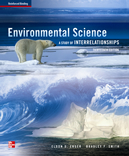1 A) Desert B) Temperate grasslands C) Dry tropical forest D) Temperate rainforest 2 A) relatively constant biomass. B) variation in biomass. C) nutirent reduction. D) All of the above are correct. 3 A) Southern Australia, coastal southern California, and the Mediterranean coast B) Africa, South America, and Australia C) Eastern U.S., Europe, and Asia D) Southern Europe, central U.S., and central Australia 4 A) aquatic organisms attached to surfaces such as rocks. B) fish. C) all aquatic organisms. D) all terrestrial organisms. 5 A) trophic level. B) benthic. C) limnetic. D) oligotrophic. 6 A) True B) False 7 A) True B) False 8 A) desert. B) grassland. C) tropical rainforest. D) temperate shrubland savanna. 9 A) primary and secondary. B) secondary and final. C) primary and climax. D) None of the above are correct. 10 A) True B) False 11 A) an oversimplification of true nature. B) correct. C) steady. D) None of the above are correct. 12 A) taigas. B) savannas. C) prairies. D) temperate woodlands.





